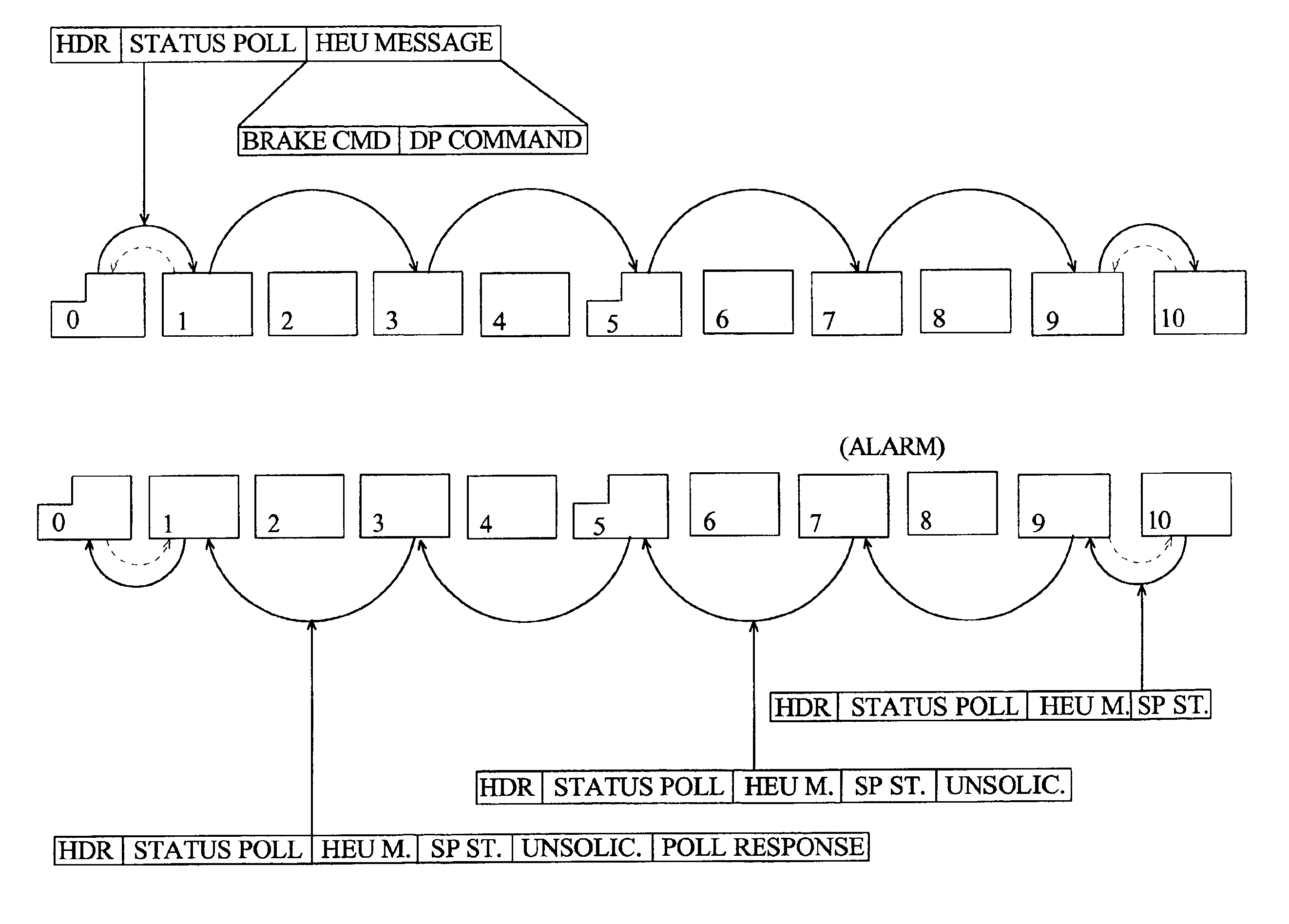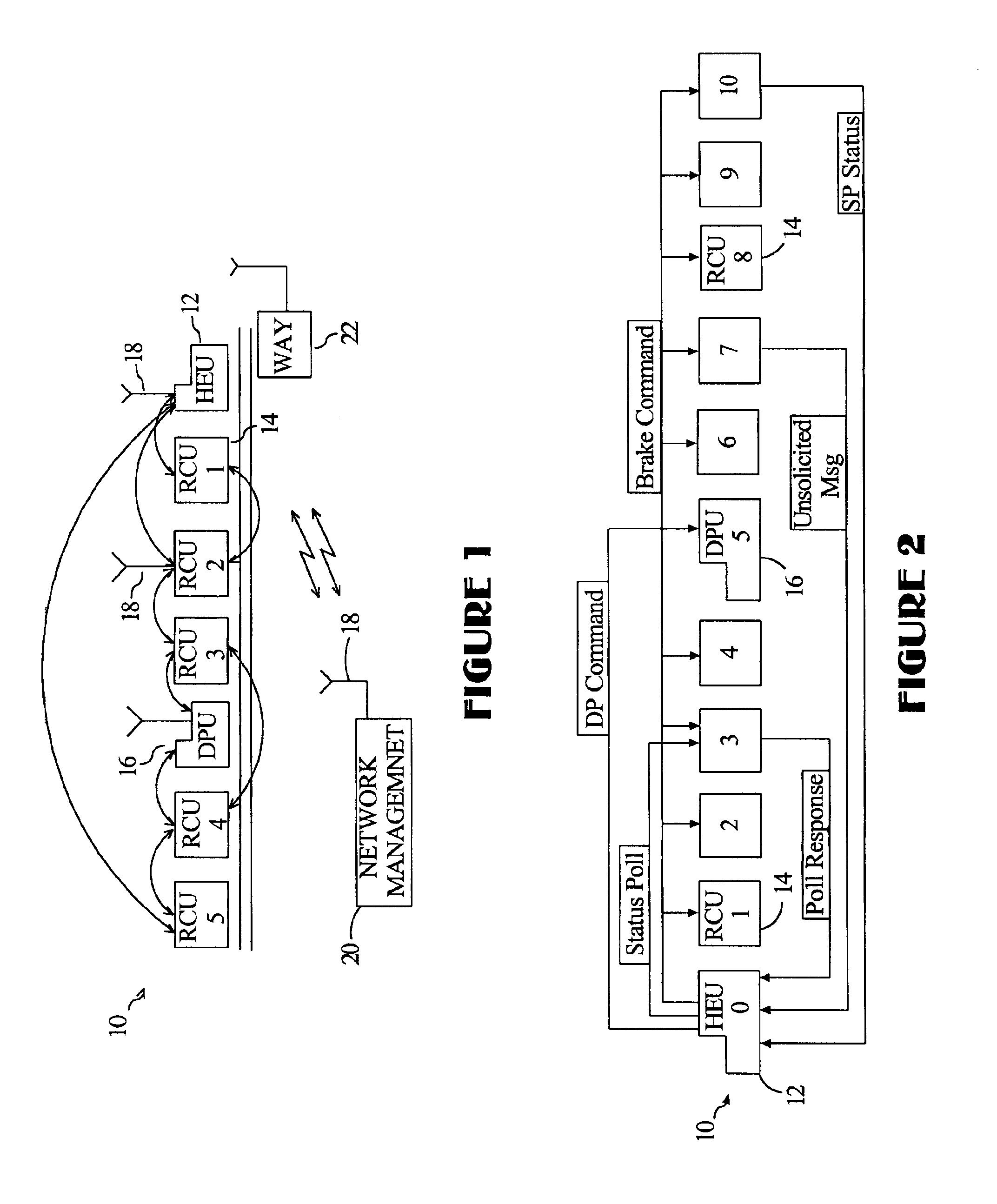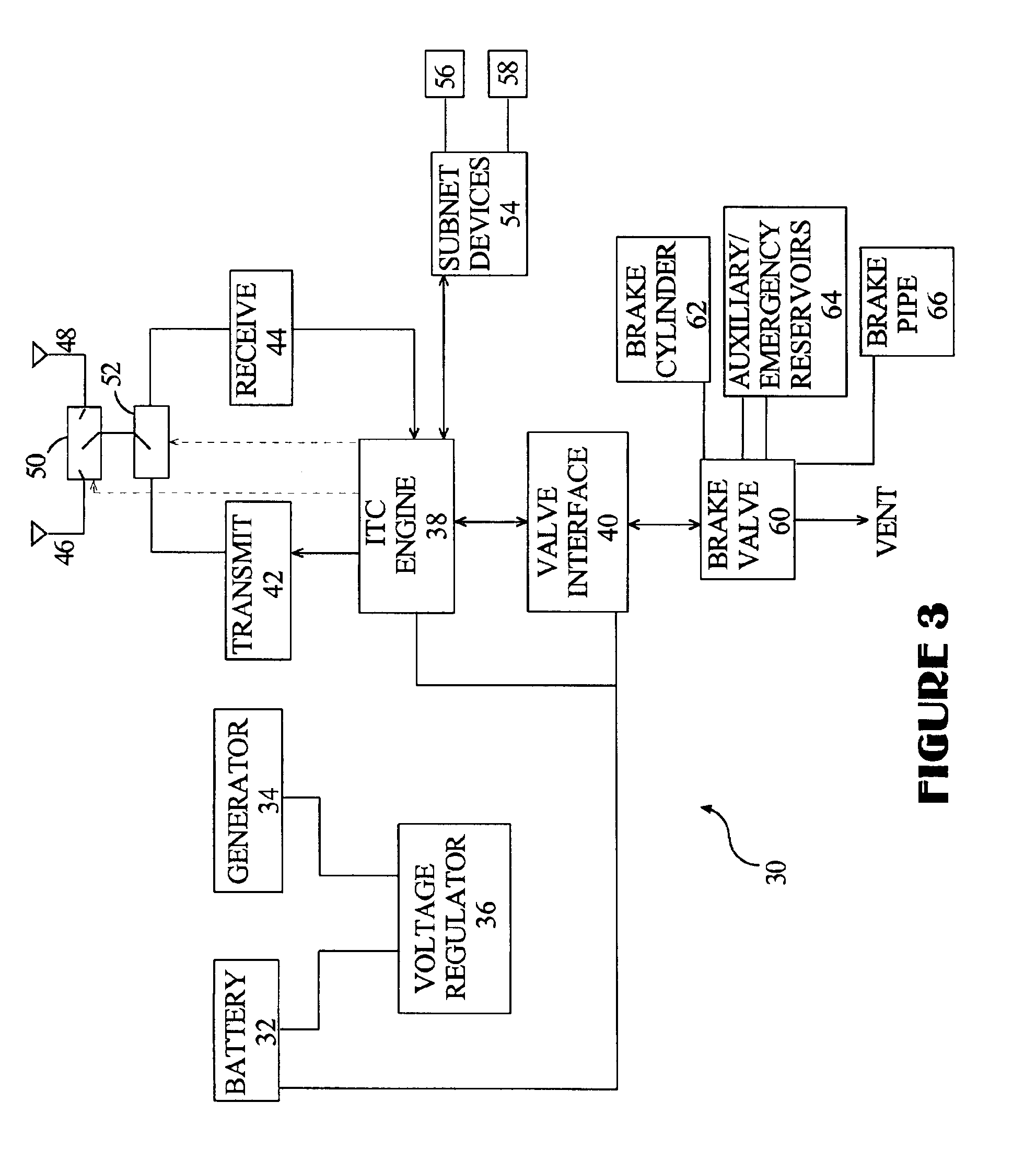Such systems, however, are known to have several deficiencies.
Accordingly, on long trains, it can take many seconds for the braking
signal to propagate to the end of the
train.
Because the braking applied is a function of the pressure change seen at each railcar, the precision to which the brake application can be controlled is degraded both by the propagation characteristics of the brake pipe and the leakage that is typically observed in the brake pipe closed pneumatic system.
It is a further known limitation of many prior art railway braking systems that such systems do not provide for variability among the railcars in the amount of braking applied.
Because the railcars are interconnected, the different braking results
stemming from railcar characteristics can cause considerable forces to be generated between cars causing considerable stress on the car draft gear and coupler.
For example, if a railcar in the middle of a train has a cargo that must be kept at a particular condition, there is no way in the typical pneumatic
air brake system for monitoring the status of such a railcar and to provide a warning if the required conditions are not being experienced.
While a wired
braking system provides the benefit of braking
signal propagation at the
speed of light, the wires which carry the braking signals from car to car are subjected to a harsh environment and may be susceptible to damage.
Worse, a break or disconnection in the wire controlling the train will result in an undesired emergency braking of the train.
However, if the nodes are not generally circular, such protocols may be unsuitable.
While high-powered, robust transceivers could be used so that sufficient power is available to communicate with even the most remote nodes, such equipment is both relatively expensive and impractical for a railroad in which the cars are typically unpowered, requiring an associated
transceiver to be based on battery or locally-generated power.
Moreover, even if sufficient power is provided to the transceivers to communicate between the furthest nodes, trains frequently operate in a manner where portions of the train are out of communication for a variety of reasons.
Urban environments may have man-made obstructions blocking the
line of sight between the beginning and end of the train.
Thus, even with increased transmission power, it is not possible to ensure continuous RF communications between all of the cars in a railroad train or other similar
linear network.
However, in a
linear topology where the receiving node may have a different transmission power that the sending node and where the environment constantly changes, the receiving node may not be able to merely transmit an acknowledgment message which will be received at the original sending node.
In such prior art systems, the failure of the original node to receive an acknowledgment usually entails another attempt at sending the original message to the same node.
Clearly, if the intended
receiver in fact received the original message, re-sending the unacknowledged message wastes the available massaging bandwidth of the system.
With many nodes in the
linear network, a train, for example, can have well over two hundred cars, the message may take an unacceptably long time to travel the length of the network, particularly if the RF environment is impaired.
In addition, such systems are susceptible to blocking along the line of nodes if one or more nodes in succession are inoperative.
When the linear network is moving, as in the case of a railroad train, there are different problems than those encountered in a fixed location.
Another serious problem faced by mobile linear networks is the fact that the surrounding environment is constantly changing.
The dynamic nature of node communication makes it difficult to reliably communicate within the nodes of a train as their geographic position and environment are constantly changing.
However, this solution is relatively slow and susceptible to blockage by the failure of one or more nodes.
The long time required to complete a message may prohibit this solution.
Further, this technique does not take into account the ability of a linear network to simultaneously transmit from multiple nodes when there are short range transmitters.
 Login to View More
Login to View More  Login to View More
Login to View More 


